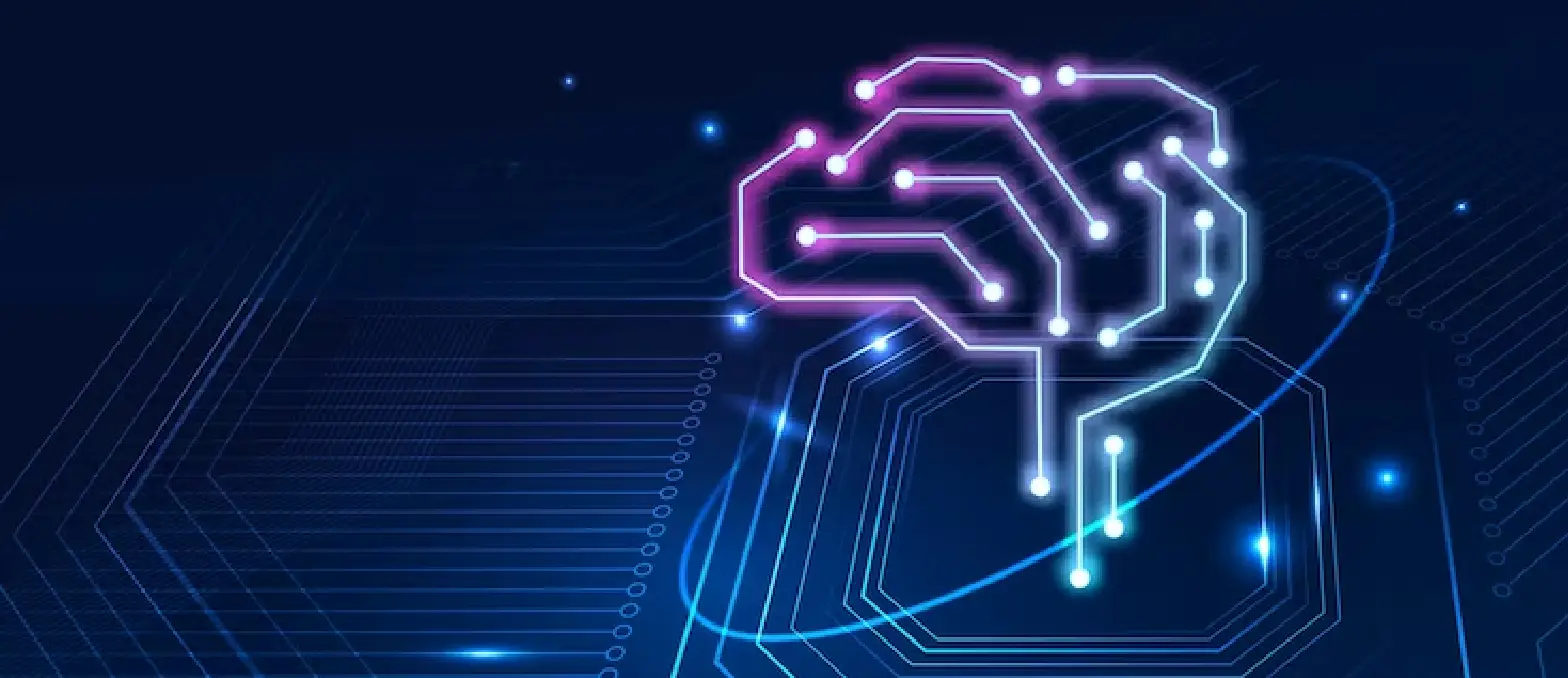Table of Contents
Kicking off your own food delivery app is a wonderful idea! It lets you deliver tasty food to your customers’ doorsteps, no matter where they are. The thought of making a food delivery app isn’t new. Yet, famous online platforms like Postmates, Uber Eats, Grubhub, and DoorDash are already making big waves in this field. But there’s still space for new ideas and growth. As a trusted food delivery app development company, we’ve watched this industry bloom.
Last year, the COVID-19 pandemic gave a unique chance to many. Business folks used the lockdown to look at on-demand food delivery app as a real choice for their businesses. And why shouldn’t they? The crisis showed us that home deliveries and a strong supply chain are key for the future. It also showed us fresh tech like the Digital Twin Technology in Supply Chain Management. We’ll chat more about this later.
Coming back to our main chat, Statista’s market research data expects online food delivery income to grow yearly at 6.36% (CAGR 2021-2024). It may reach an estimated market volume of US$182,327m by 2024.
Given this bright forecast, many cafe and bistro owners are thinking about boosting their business with help from a food delivery app. But we get it – starting such a big project can feel scary, especially without knowing all about the app development process. This includes stuff like making money, cost, features, and related functions.
To make this easier, we plan to share all the key details needed for food app. To show you better, we’ve used Uber Eats as an example. We’ll look at its history and the things that made it succeed.
What is Uber Eats & Its Business Model?
Uber Eats is a food delivery platform that helps its users to order online food from their favorite restaurants, cafe, or bistro. It owns a vast library of local restaurants for its users to order anything whenever they want. There are many other prominent, or we can say Uber Eats competitors such as Postmates, Doordash, GrubHub, ChowNow, and so on.
Uber Eats is available on all platforms, i.e., Android, iOS, and web versions. However, the process of ordering the food is the same. All you have to do is select the restaurant, pick the item, and then check out. We have briefly shared the quick ways through which you can make an order; basically, Uber Eats is easy to navigate, yet there are some simple ways through which you can control your hunger!
Note- Are you thinking about which mobile operating system will be best for your customized app? Make sure to learn the in-depth difference between Android and iOS.
- Log in to your Uber Eats account and use the search option at the bottom of the app. If you are logged in on the web page, search for your favorite restaurant by name or any other specific dish.
- You will get two options, either to pick up or to deliver the food. You can choose according to the requirements. Additionally, you can also set the filter as per the requirements, such as dietary, price, delivery time, and so on.
- Additionally, you can also “start group order” by sharing the link with your friends and families. Later, they can add their item to the cart as a sole order on the same delivery location.
- Not only this, but you can also opt for food delivery at your convenience through its “Schedule for later” feature. This option is available on all platforms.
This is how you can order your favorite food across the Uber Eats platform; let’s look into the Uber Eats delivery fees and its order cancellation process. When you were following the above-mentioned method to order the food, you noticed the specific fee for the requested item. Some restaurants charge a delivery fee, and others charge no fee under a certain amount of order. There are some other apps that have service fees linked with their app or webpage. This charge covers the cost between you and the food caterer, or it also helps the driver to connect with you.
On the other hand, if you want to cancel the order, tap on the upcoming orders tab and then, there select the order that you want to cancel. You will get a feature of “Cancel”; make sure you are eligible to get a refund when you discard the order before the order is accepted by the restaurant.
The next step is to acknowledge the Uber Eats subscription program. This amazing platform offers a subscription program, Eats Pass, and it is available for $10 per month. Basically, this subscription package waives the delivery charge and also gives you exclusive access to discounted prices on orders above $15.
This can be a good take for those users who are using UberEats regularly. You can also check more about this package from the website, but you need to sign up for this program. Let’s talk about Uber Eats’ business model. It has been observed that this food delivery platform, with the help of a food delivery app, has awakened various food industry owners to either join or create their own platform with the help of on-demand mobile app development companies. Uber Eats owns the traditional food delivery method by listing all the restaurants, cafes, and bistros in a single app and meanwhile handling the food order delivery.
However, Uber Eats doesn’t outsource any logistic network for fulfilling orders; instead, they use their own delivery option. As we said above, its application uses various customizing features that make the order process more convenient and easy. The best features are customized restaurant recommendations, an advanced search filter, personalized delivery details, and accurate order tracking through their in-built GPS tracking system.
Business Model
We have also listed down the clear canvas of the Uber Eats business model for a clear understanding:
- Customer Relationship: Effective customer service, promo codes, discounts, and social media connectivities.
- Key Partners: Delivery Partners, Drivers, Restaurant Partners, and Payment Processors
- Channels: App Store, Social Media, Desktop, Smartphone, Support Partners
- Customer Segments: Individual users ( working professionals, families) and Restaurants
- Value Proposition: Fast delivery, existing clientele, global presence, clean algorithm, no concept of minimum order, utilizing Uber’s resources for two ways benefits
- Chief Activities: Selecting the restaurant, placing the order, picking up the requested order, successful delivery of food order
- Cost Arrangement: Marketing pattern, Technology advisory, drivers’ wages, discounts for Eats Pass
- Chief Resource: Eatery Owners, Individuals who own their vehicles, costumes who want an online food
- Revenue Generation: Order fee, delivery fee, marketing & advertising fee from the restaurant partners, commission fee from the eateries, revenue shares from the restaurant partners
In a nutshell, Uber Eats’s business model runs when the customer orders food online, and the restaurant receives the request and confirms it. A delivery partner is assigned for that requested item, and once the food is prepared, it gets picked up. Thus, the food is delivered to the doorstep!
This is the business and revenue model that UberEats follows; you can get in touch with a reliable IT consulting services company. Let’s jump into the next section through which you can have a clear understanding to build your own food delivery app.
Build Your Own App Like Uber Eats
Building a product, software, or app needs a thorough grasp of the software solution you want to bring to the market. Specifically, when you’re setting up a food delivery mobile app project, like Uber Eats or DoorDash, it’s vital to follow some steps closely.
For this goal, we’re giving a clear roadmap filled with essential steps to follow for a successful venture.
Start With Market Research
This is where your journey begins! Make it important to jot down deep research involving rivals, target customers, and current food trends. You can start your research analysis by asking what services you want to offer and comparing them with what your rivals have. You might also want to get advice from Custom Mobile App Development Services during the initial phase of app development.
Knowing your target audience and serving them is critical. Think about the features that you want to add to your app to get ahead of your rivals. Embracing change is the key to success, so be ready to change your services as per the online food industry’s shifts. And while doing market research, don’t forget the role of Big Data Analytics.
Select The Food Delivery Model
Mainly, you can choose between two food models – the Order-Only Model (OOM) and the Order & Delivery Model (ODM). Each model has different functions. The OOM platform handles and manages the requested food order, while the ODM takes care of orders and ensures delivery to the customer.
The OOM model doesn’t provide logistical support as the restaurant itself does the food delivery, whereas the ODM has the necessary logistics guidance, with the delivery managed by the food delivery channel. It’s important to understand the earning potential of these food delivery models. While OOM earns money through commission fees from partnered restaurants, the ODM charges commission fees from restaurants and a delivery fee from customers.
Delivery.com and Just Eat are good examples of the Order-Only Model, while Deliveroo and DoorDash are examples of the Order & Delivery Model.
Choosing the Right Features of a Food Delivery App
Do you remember the importance of market research we mentioned before? Here’s where your analysis becomes crucial by recognizing the services and features offered by your competitors. However, every entrepreneur has a unique vision they want to achieve through their on-demand app development.
Using The Right Technology Stack
Choosing the right technology for your food app is critical, as it is the backbone of your product, ensuring a smooth user experience. Thus, you need a committed team from a food delivery app creation for your food startup.
At first, you can consider the following technologies while your dedicated team will guide you through the process:
- Web App Development: AngularJS or React – popular choices for business owners opting for mobile app development.
- Mobile App Development: Kotlin (Android) and Swift (iOS) – although there’s often a debate between Kotlin and Java, the choice truly depends on your project’s needs.
- Back-End Development: PHP language, especially if you’re new to programming. For a thorough understanding, look into PHP Web Development Services.
- Databases: MySQL
Also, many third-party services can be added to food app. Payment gateways like Braintree, PayPal, and Square are good choices. For cloud platforms, consider Amazon Web Services or Azure. Google Maps and Places remain the best choices for location services. For any extra help, we suggest maintaining a close relationship with your dedicated team from the food delivery app development companies in the USA for better understanding.
Cost to Build An App As Uber Eats
When it comes to figuring out how much app development might cost, there are a lot of aspects to consider. Things like the app’s size, the features it has, the places it can be used, its design, what it’s made on, and who’s making it all matter. So, when you go to a custom mobile app development company with your app idea, be sure to tell them everything you want the app to do. This way, they can give you a good guess of how much it’ll cost.
On a deeper look, you might see some solo developers or freelancers offering to build your app for between $10k and $15k. But don’t forget, making an app like Uber Eats needs careful planning and a clear vision to make it stand out in a busy market. Also, watch out for tricky sales tricks. The price of making an app isn’t just affected by things like making sure it works right and testing it, but a whole lot more.
These days, a lot of business owners want to make their customer service better by adding virtual helpers, which means they also need chatbot development services. Adding these extra parts can make your app cost more too. With all this in mind, a food delivery app might guess that making a tough, successful food delivery app will cost somewhere between $35,000 and $75,000.
Collaborate to Build an App Like DoorDash
To create an app like DoorDash, your first step is to partner with a reliable team. Skilled developers, UX/UI designers, and market strategists can bring your idea to life. They will assist in crafting an appealing app design while also guiding you through the process of developing a robust back-end system.
Collaborate to Build an App Like DoorDash
To create an app like DoorDash, your first step is to partner with a reliable team. Skilled developers, UX/UI designers, and market strategists can bring your idea to life. They will assist in crafting an appealing app design while also guiding you through the process of developing a robust back-end system.
- Customization is the Key: Remember, your food delivery app should mirror your business values. It should adapt to your target audience’s needs. This might mean adding features like multiple payment methods, live tracking, or a clear, easy ordering process. Working with a food delivery app company can fine-tune these features to match your needs.
- Understanding the Costs: Like all digital items, the price of your DoorDash-like app depends on many things. These include app complexity, selected platform, features to include, and the country of development. A good chat with your chosen food delivery app can give you a better idea of the needed budget.
- Keeping Up with the Competition: In a busy field like food delivery, offering something fresh is key. DoorDash shines because of its focus on driver benefits and customer-first thinking. Study your rivals, grasp their strong points, and come up with ways to do better.
- Ensuring Success: To make sure your app wins, it’s key to place customer happiness at the core of your business plan. Regular app changes based on customer thoughts can boost user experience. Also, it’s vital to put money into a solid marketing plan to draw users to your app.
Mobile App Trends Shaping Application Development In 2025
Each year, new trends come to light in mobile app development. They direct how a food delivery app and tech businesses alike tailor the design and development of their apps. In 2023, these trends aim to elevate user experience and use the latest tech for inventive solutions.
- Artificial Intelligence and Machine Learning: Artificial Intelligence (AI) and Machine Learning (ML) are now part of many mobile apps. A Food delivery app can employ AI and ML for tasks like guessing user actions, customizing experiences, and streamlining processes. For example, AI can provide personalized food suggestions based on previous orders or user food preferences.
- Augmented Reality: Augmented Reality (AR) is a trend that’s picking up speed. It boosts user experience by merging digital details into the real world. For food delivery apps, AR could let users ‘see’ how a dish appears before they order it, offering a more lively and engaging user experience.
- Voice Technology: The rise of virtual helpers like Siri and Alexa has boosted the demand for voice technology in apps. Adding voice search features in a food delivery app can make it easier to use and more user-friendly. Users could simply ‘tell’ the app what they’d like to order, ensuring a smooth ordering process.
- Blockchain Technology: Blockchain technology isn’t only for digital currency anymore. It offers better security, transparency, and helps to limit fraud. A food delivery app can use blockchain for secure payment transactions, bolstering user trust in the platform.
- Internet of Things (IoT): IoT in mobile apps lets interconnected devices communicate and share information, enhancing functionality and user experience. In food delivery, IoT could allow users to follow their orders in real-time, provide more precise delivery times, or link with smart home gadgets.
- Cloud Integration: Cloud tech in mobile apps allows for secure storage and management of heaps of data. It enables smooth app functionality across different devices and boosts app speed and performance. Food delivery apps can keep menu details, customer order history, and other data on the cloud for effortless access and updates.
- On-demand Apps: The triumph of on-demand apps like Uber and DoorDash has encouraged many sectors to adopt this trend. As more businesses offer instant, on-demand services, app development services are focusing on crafting responsive, efficient, and user-friendly on-demand apps.
- Green App Development: Sustainability is a growing concern for many users. Therefore, the development of energy-efficient apps that lessen device resource use is an emerging trend. It’s about creating apps that have a small impact on device battery and performance, yet still deliver a superior user experience.
Mobile app trends in 2023 aim to improve user experience, exploit cutting-edge technology, and resonate with societal values like sustainability. For a food delivery app, keeping up with these trends is crucial. It guarantees the apps you develop are not only relevant but also innovative and ready for the future.
Get your own Food Delivery App like Uber Eats
Final Words
Making a food delivery app is no small job. Yet, with help from a skilled food delivery app developer or company, your product can really soar in the market. It’s key to go step by step and to chat a lot with your team.
That said, you need more than just any team. You need to work with one of the top app development companies in the USA. Their wide know-how can guide you through the tricky process of making an app. They make sure you’re on the right path from the get-go to the end.
Also, don’t forget to dig deep into research and development. No need to rush things. Instead, take your time to look into all parts of your product’s growth before you move ahead. In the world of making apps, being thorough can turn your app from just okay to a market leader.
FAQ’s
Why is Uber Eats so popular, and how can I emulate its success?
Uber Eats, a famed name in the food delivery sector, has tasted incredible success. A handful of key elements help explain its wide appeal. These include a super simple interface, a vast spread of meal choices, and speedy deliveries. Uber Eats also teams up with countless eateries, offering a large selection for the user. To mirror its victory, understanding and adopting these elements is crucial.
One method involves making your food delivery app super easy to use. Keeping the design simple helps users sail through the app. Offering a wide spread of food varieties appeals to more people. Also, speedy and trustworthy service is a must. Quick handling of customer issues can give your app’s popularity a big boost.
How long does it take to develop a food delivery app?
The time to create a food delivery app hinges on the project’s complexity, the features included, and how skilled the development team is. In general, a basic version may take anywhere from three to six months. Yet, for a more feature-packed, sturdy app, the timeline might extend to a year or more.
What is the role of a food delivery app in the development process?
A food delivery app plays a crucial role in bringing your vision to life. With technical expertise, it helps in crafting both the front-end and back-end of the app, ensuring it’s user-friendly and aligned with your business goals. The process also involves thorough testing to identify any issues, followed by refinements based on feedback for optimal performance.
How important is market research in the development process?
Market research is a vital step in app creation. It offers insights into what customers prefer, market shifts, and rival businesses. It helps pinpoint your app’s potential users and their needs. These insights prove useful when shaping your app’s features, design, and promo plan. Without thorough market research, your app might not satisfy customer needs or outshine rivals.
How can I choose the right food delivery model for my business?
Picking the right food delivery model is about knowing your business and market demands. The three main models are – order only, order and delivery, and fully integrated models. In the “order only” model, your app takes orders, but the restaurant handles delivery. In the “order and delivery” model, you take care of orders and delivery. The fully integrated model means managing everything, from cooking to delivery.
To choose the right model, think about factors like your budget, operational abilities, and market demands. Also, consider the advantages and disadvantages of each model and how they line up with your business aims.
To choose the right model, think about factors like your budget, operational abilities, and market demands. Also, consider the advantages and disadvantages of each model and how they line up with your business aims.






